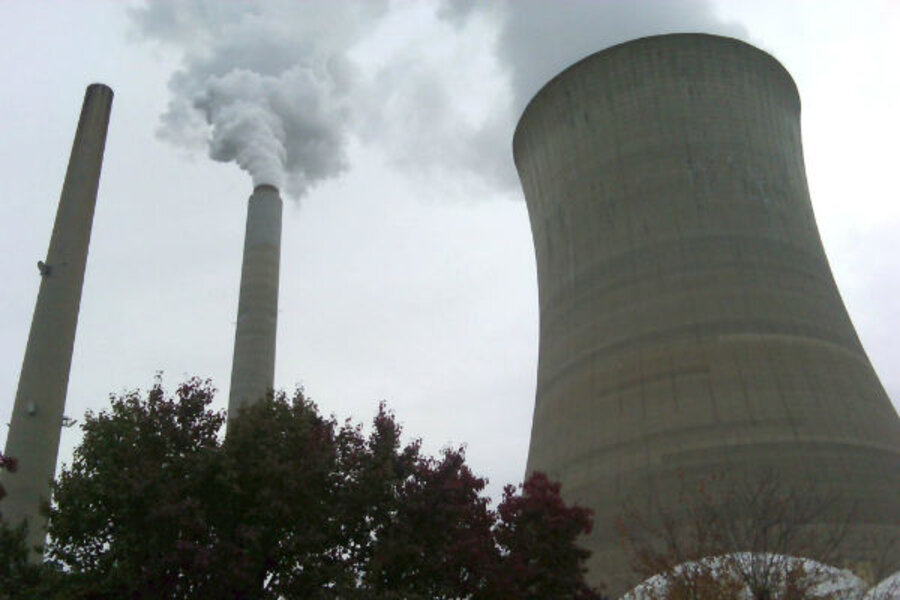A way to curb global warming: Suck carbon emissions right out of the air?
Loading...
Efforts to combat global warming, triggered and reinforced by rising levels of carbon dioxide as humans burn fossil fuels and convert forests to farmland, largely focus on preventing CO2 from entering the atmosphere in the first place.
But small groups of researchers are pursuing a complementary approach. They are looking for ways to remove CO2 already in the air.
On small scales, the approach has been used since the 1930s at dry-ice facilities, as well as to scrub CO2 from the air on submarines and on the International Space Station. Proposals to use air capture to help reduce atmospheric CO2 concentrations first appeared in 1999.
However, "over the last two or three years, there's been a lot of new [research] publication in this field," says Alain Goeppert, a researcher with the Loker Hydrocarbon Research Institute at the University of Southern California (USC).
The interest is driven in no small part by a handful of start-up firms that are developing prototype air-capture systems. But it's also driven by the recognition that CO2 concentrations in the atmosphere already exceed a level that some scientists say stands the best chance of holding global warming by the end of this century to about 2 degrees Celsius (3.6 degrees Fahrenheit) above preindustrial levels.
Air capture essentially involves passing ambient air across liquid or solid materials that absorb CO2. Conceptually, it's similar to extracting CO2 from coal-fired power-plant emissions.
But air-capture advocates note that some 30 percent of the world's CO2 emissions come from cars, aircraft, and other mobile "nonpoint" sources, where scrubbers at the tailpipe are impractical.
Tackling emissions from these sources will be necessary in order to meet any goal for stabilizing CO2 levels in the atmosphere, because the CO2 that oceans or terrestrial vegetation don't take up remains in the air for centuries. Stabilizing concentrations essentially means stopping the emission of additional CO2.
"Without air capture, nonpoint sources of emission will need to be phased out over the next few decades if we want to stabilize the climate," argues Klaus Lackner, director of Columbia University's Lenfest Center for Sustainable Energy and a founder and director of Kilimanjaro Energy, one of the start-ups working on air-capture technologies, in an article published last year in the Proceedings of the National Academy of Sciences.
Air capture has its critics, who argue that the approach is likely to be too expensive to implement in a way that would have a significant impact on emissions.
For instance, a team led by Kurt House and Howard Herzog at the Massachusetts Institute of Technology has estimated that the full cost to remove a ton of carbon from the air would be around $1,000 for an air-capture system, compared with as much as $100 per ton for a system that scrubs the CO2 at the smokestack. The team nevertheless noted that beyond the year 2050, the approach "may even be deployed to reduce atmospheric concentrations of CO2 below current concentrations."
In the end, however, says USC's Dr. Goeppert, virtually all of the cost estimates "are quite speculative.... To really know how much it's going to cost, you're going to need to build some demonstration plants."








